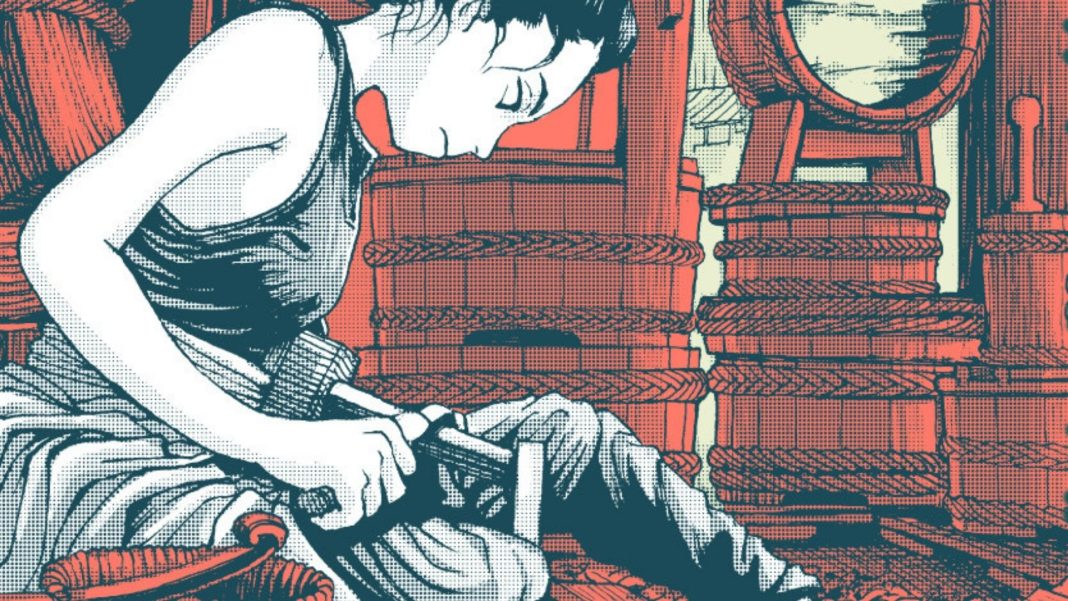Neighborhood Craftsmen: Stories from Kanda’s Gokura-chou Volume 1
Writer & Artist: Akihito Sakaue
Publisher: Yen Press (print & digital)
Translation: Ko Ransom
Lettering: Abigail Blackman
Publication Date: Jul 22, 2025
Rating: Teen
Genre: Manga (JPN), Slice-of-Life, Drama, Historical Fiction
Akihito Sakaue‘s debut work from Yen Press, Neighborhood Craftsmen: Stories from Kanda’s Gokura-chou, is set in a fictional but historically accurate area (-chou) in Kanda, named Gokura-chou. In this first volume, each chapter focuses on a different artisan: the cooper, swordsmith, indigo-dyer, tatami-weaver, and lastly the plasterer, whose story expands to three chapters. All the artisans are part of the same community, even though their stories read as stand-alone narratives.

For Akihito Sakaue, the plot is less of a concern than the visual narrative. In the first chapter, “The Cooper“, the artisan first chooses wooden planks, then fixes the pails customers bring, ending the day with a cup of sake. In chapter 4, “The Tatami Weaver”, a group of artisans visits one of the pleasure quarters in Yoshiwara, the red-light district, and mend the tatami while courtesans watch them work. Save for the longest story, The Plasterer, there are no plot beats to follow in the conventional sense, and what happens in these chapters in terms of event or plot progress is inconsequential.
What’s truly under the spotlight are the artisans. The work they do, the materials they use, their bodies straining with effort, minds racing, gazes unquiet but contemplative, and the product of their labor. In Neighborhood Craftsmen, you will find pages upon pages of a needle piercing through straw layers, carefully selected steel cores melted, tempered, and forged, fabrics dipped in barrels of dye, and the results used or appreciated by the community.
And most importantly, you will find hands that create. Hands that give shape, bend and break, measure and cut, mix and knead, handing down the years of knowledge, experience, trial and error to younger artisans who’ll carry on the tradition while melding in their vision.
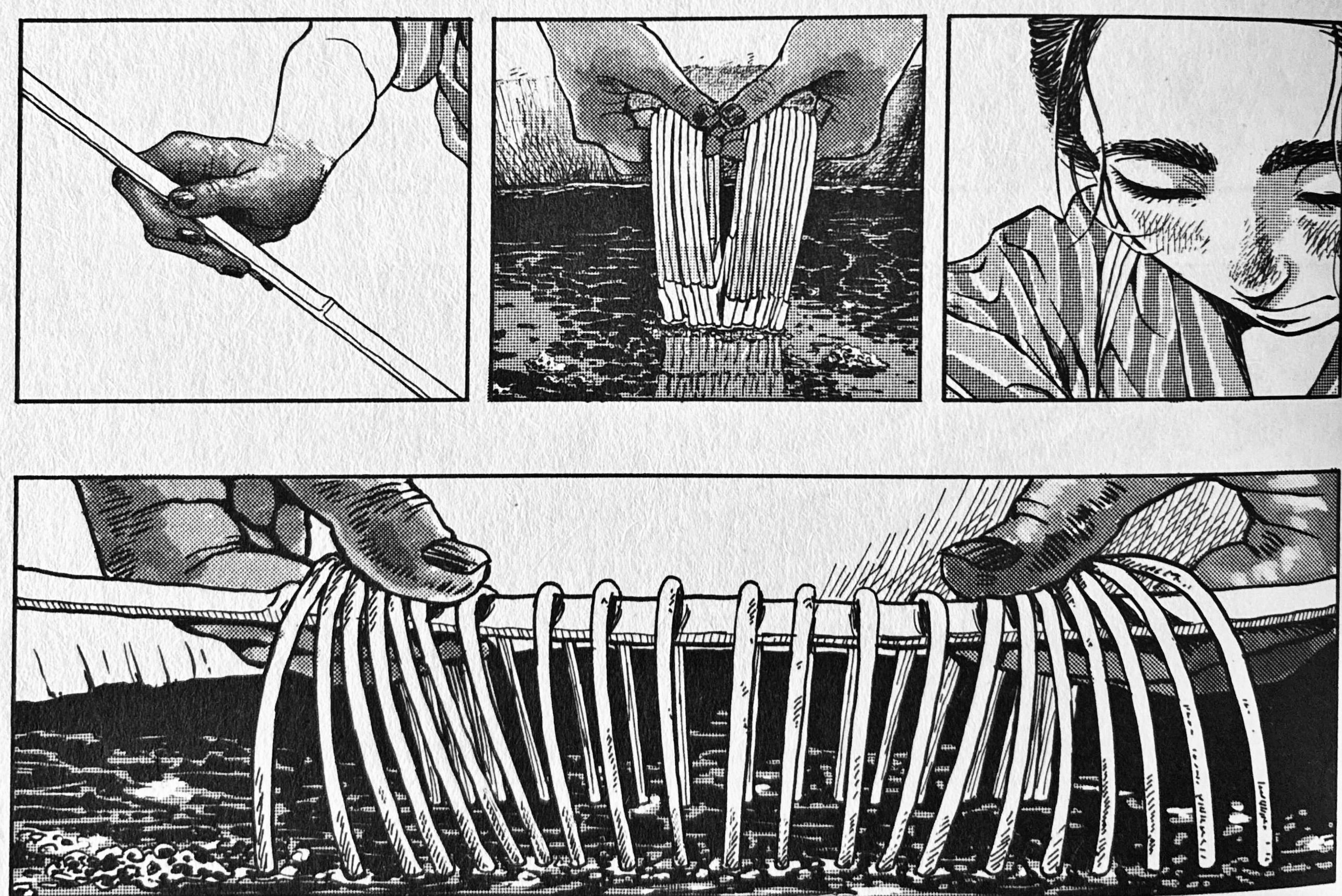
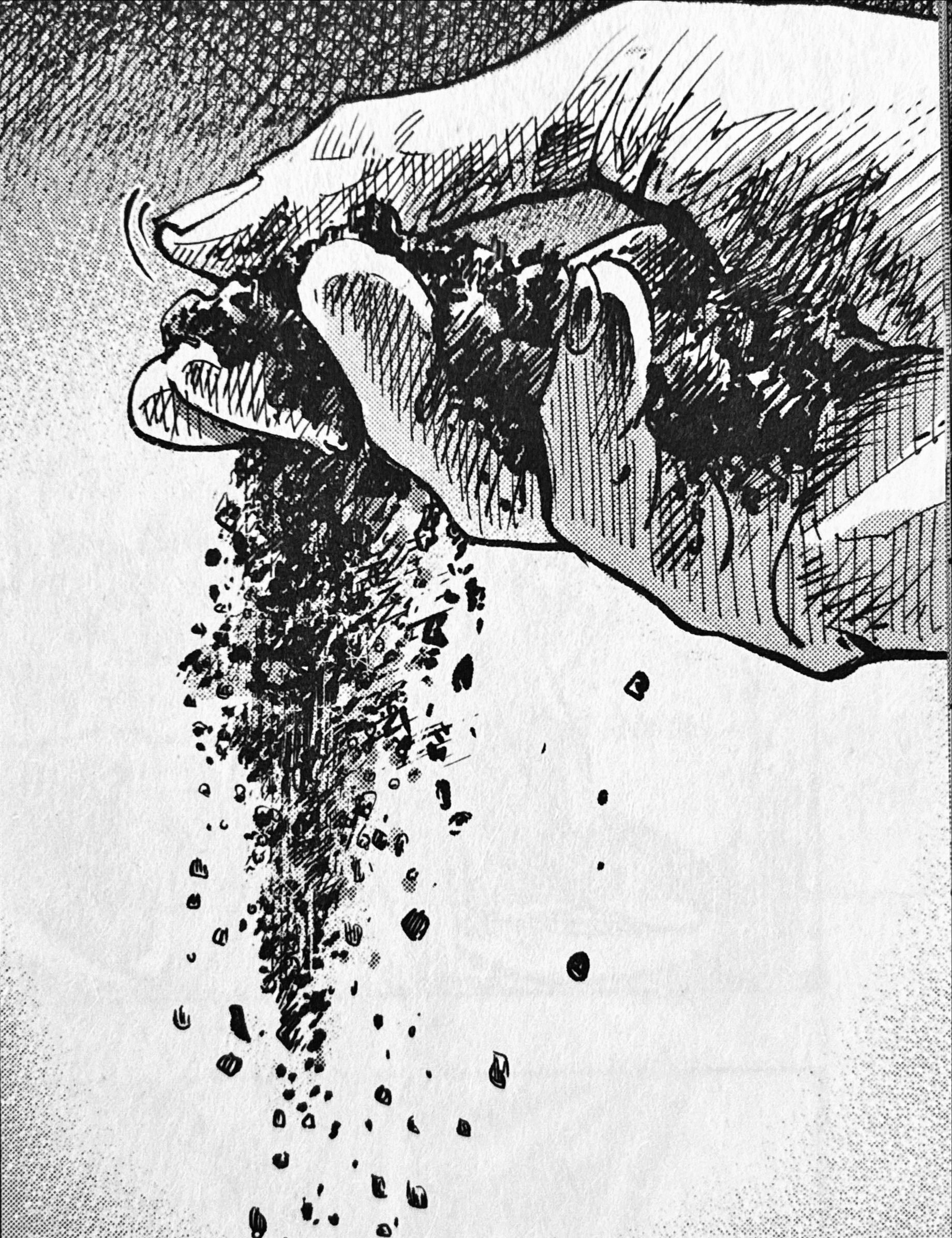
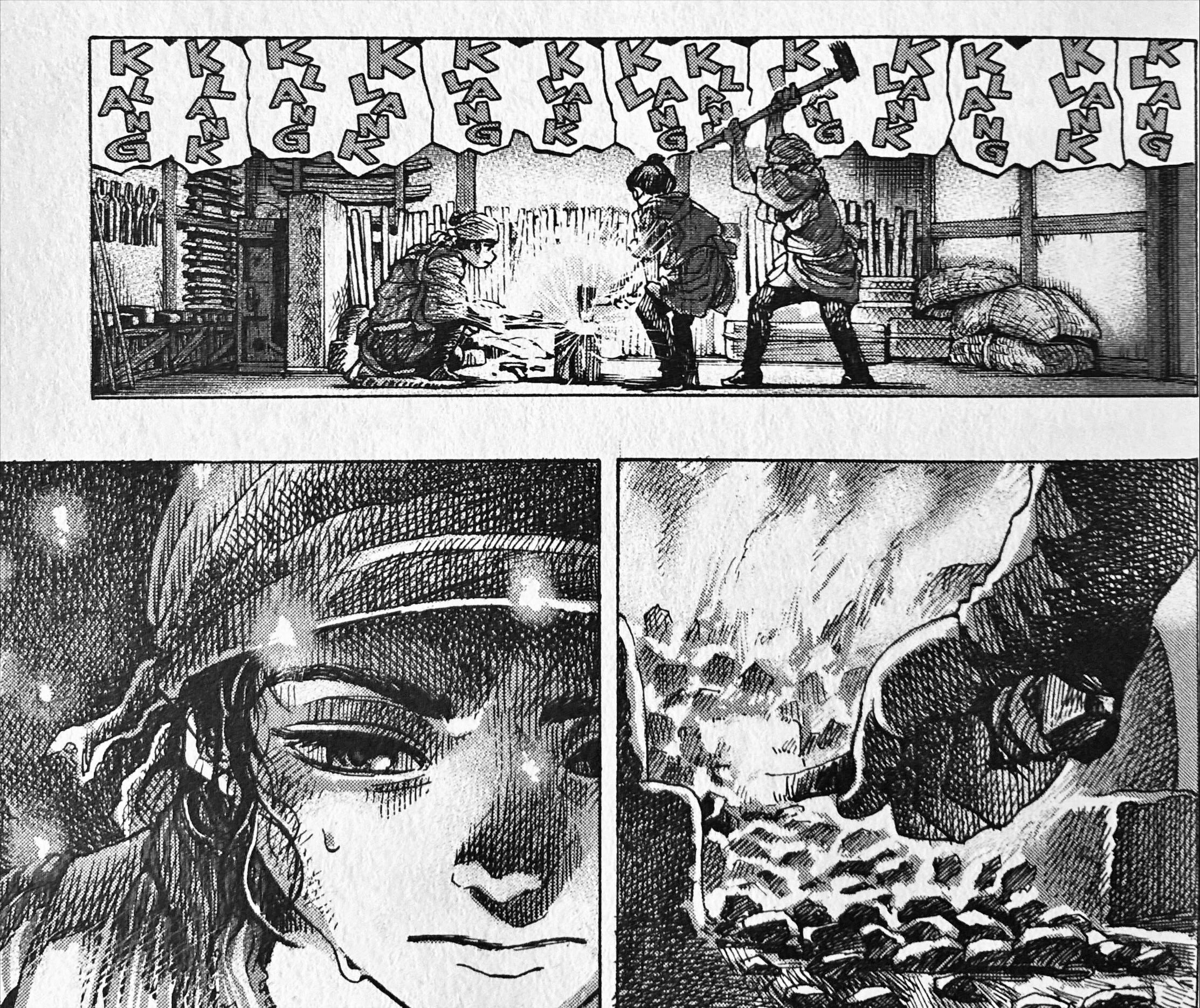
This first volume of the ongoing series was truly an immense pleasure to read, especially as someone who views manga as a visual medium first and foremost. Those pages of quiet labor and contemplation could easily be filled with idle chatter or exposition. The panels could’ve focused on a wider area to include both the artisans and the commoners around, along with the physical space they inhabit. Those moments where the artisan and the work are positioned in relation to others and the outer world exist, of course. However, the pages that truly shine are the quiet, sometimes hurried, other times slowly paced, but always focused instances of bodies bent over their craft.
The fact that these quiet pages can communicate so many emotions is all possible with Sakaue’s immaculate art style and attention to detail. You can easily read worry, determination, wonder, or joy on the pensive faces of these workers, and the unwavering hands of a skilled artisan awaken a sense of awe, as if we are actually watching the hands move. The sheds, workshops, workwear and tools are all so detailed and beautiful. Every page, every panel is worth the time to slowly explore.
Moreover, Sakaue doesn’t miss highlighting the collective aspect of craftsmanship. Depending on the nature of the craft, such as plastering or dyeing, the work itself demands a large number of people. When it’s a solitary work, there are masters and apprentices, artisans discussing the quality of materials with one another or with traders. The customers or contractors are secondary to the narrative, if they are mentioned at all.
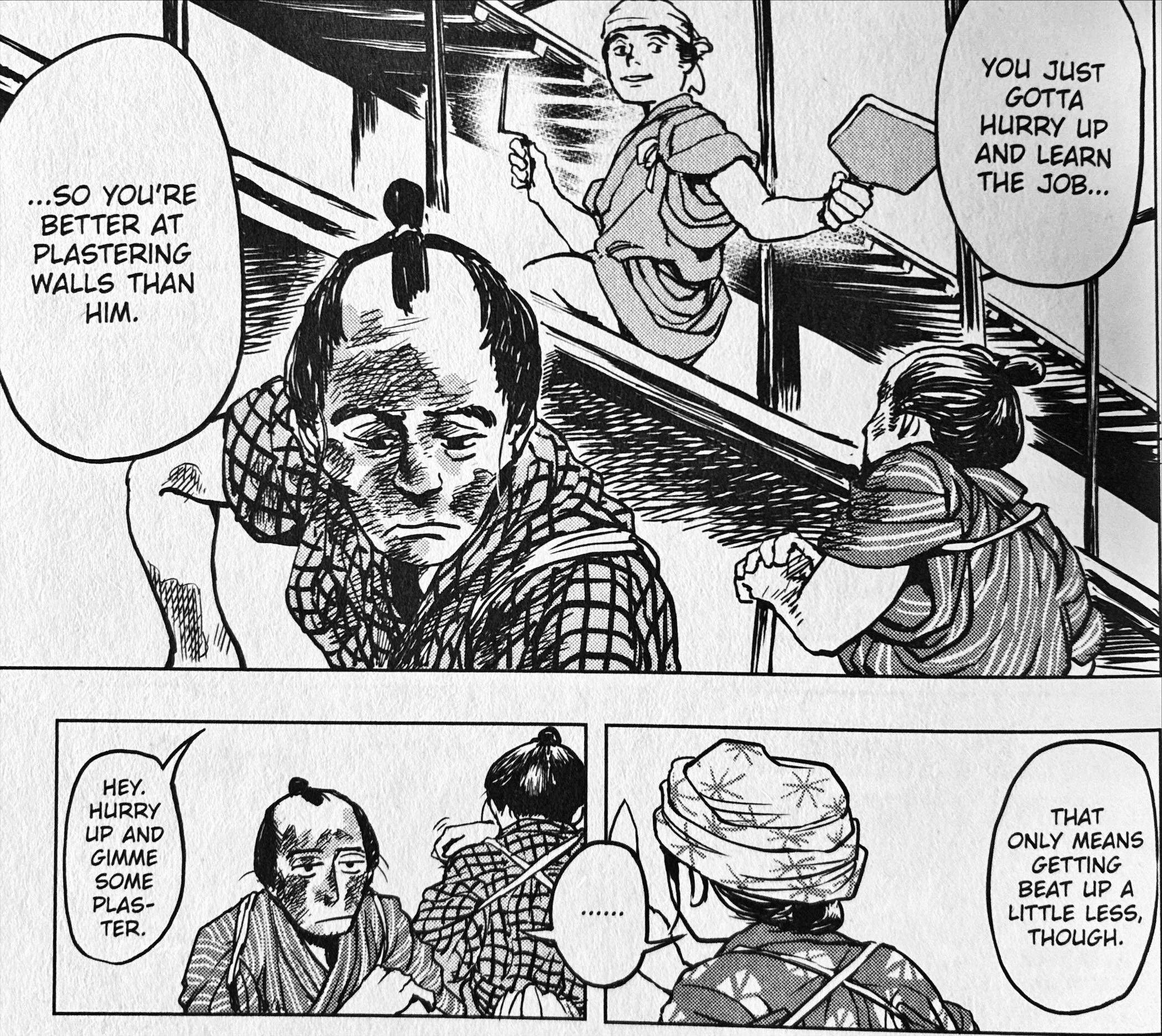
The leaders or seniors are not exclusively men. Women in higher-level positions among the apprentice artisans learning under the same teacher aren’t visually distinctive, both in workwear and physical appearance-wise. However, depending on how physically demanding the craft is, their gender quietly seeps into conversations or taints the way other artisans view or treat them. These themes are never at the core or overshadow the craftsmanship, but they’re there, as subtle as they are.
I would argue that craft is “more” than it seems, unlike fine art. The prevailing image of art in the minds of non-practitioners is the realization of inspiration, almost divine and existing in a vacuum, through an artist’s creation, which almost implies a Virgin Mary-esque “birth” of an artwork. It’s no coincidence creators often refeir to their work as their babies. “Labor”, in their case, truly doubles both as work and as conception.
However, creation doesn’t exist, cannot exist, in a vacuum, and art is “less divine” than it’s made out to be. From the scientists and workers developing/producing the tools and technology used for making art to the socioeconomic, political, and cultural context in which the artist exists, to eventually someone, anyone, to see and interact with their creation, both the artwork and the artist exist in a specific time, place, and context. It is a form of conversation, rather than an existence born out of the void.
In a similar vein, despite usually being simmered down to physical labor simply because functionality is a crucial part of a craft, craftsmanship is “more” than it seems. Compared to art, crafts are more closely linked to our everyday life. However, that doesn’t mean there’s no philosophy or artistic sensibility behind craftsmanship. You can trace stylistic currents, a pursuit of beauty that exceeds simplistic functionality, dedication to mastery, and it’s a lifelong journey.
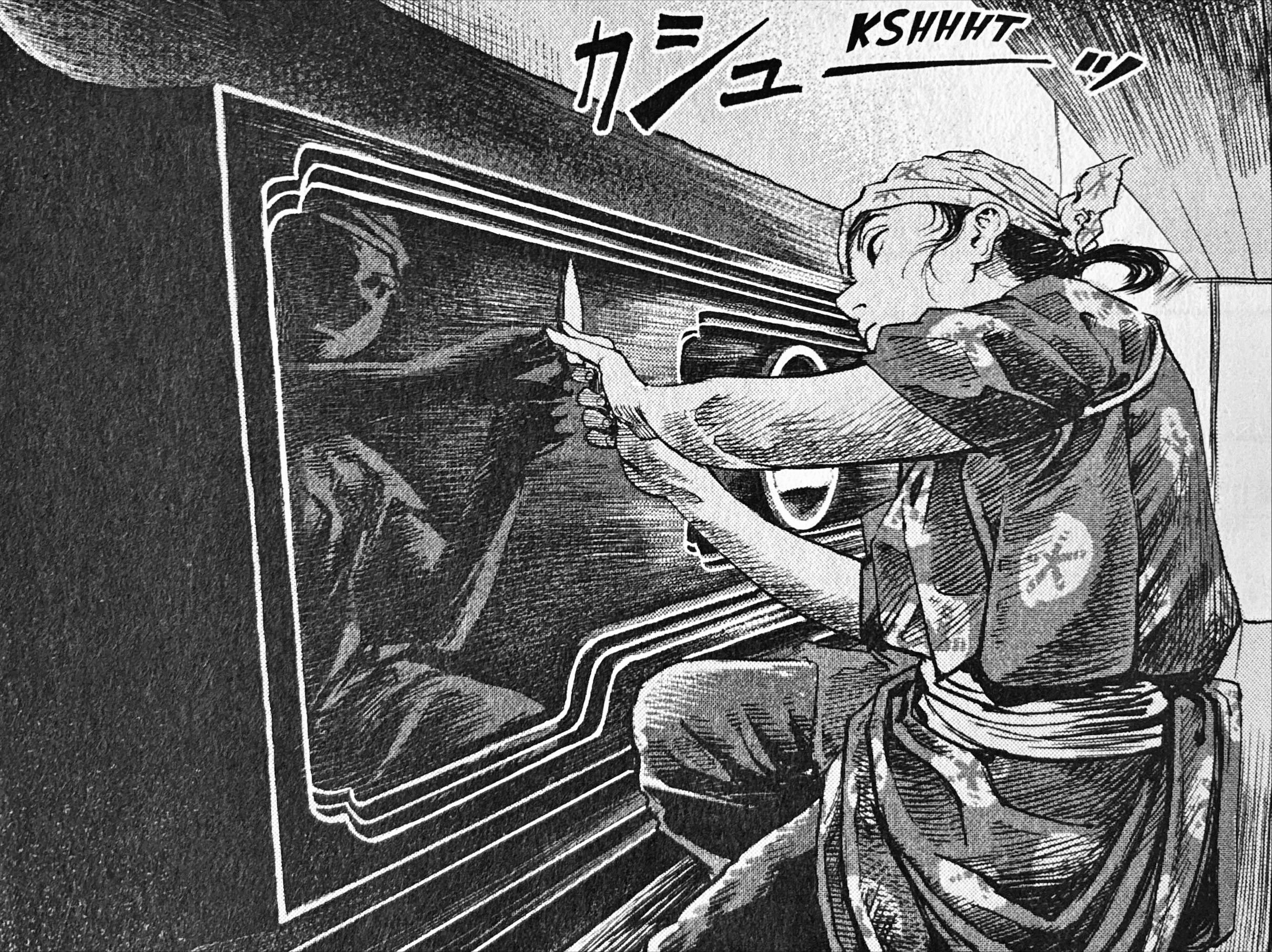
There’s so much to be said about the slow, enduring process of coming together, working tirelessly for years to finally (or hopefully) get better at a craft, and being able to build tools, buildings, everyday items, dishware, accessories, and fabric for clothes that’ll last a lifetime and hold meaning for its owner in our fast-paced, consumerist lives. We’re surrounded by easily replaceable, mass-produced items that’ll quickly “fail to pass the social media vibe check.”
What I’m more interested in, however, is the result of this constant state of consuming, the never-ending cycle of buying, discarding, and buying the next popular/fashionable thing. A severe alienation from how much hard work, mostly others’ hard work, goes into our existence, into the maintenance of the consumerist cycle, to provide us with our “daily fix” of entertainment. A very recent example the readers of this review should be familiar with is that some manga readers are incredibly blind to the amount of labor and time that goes into a single volume of manga before it reaches our shelves.
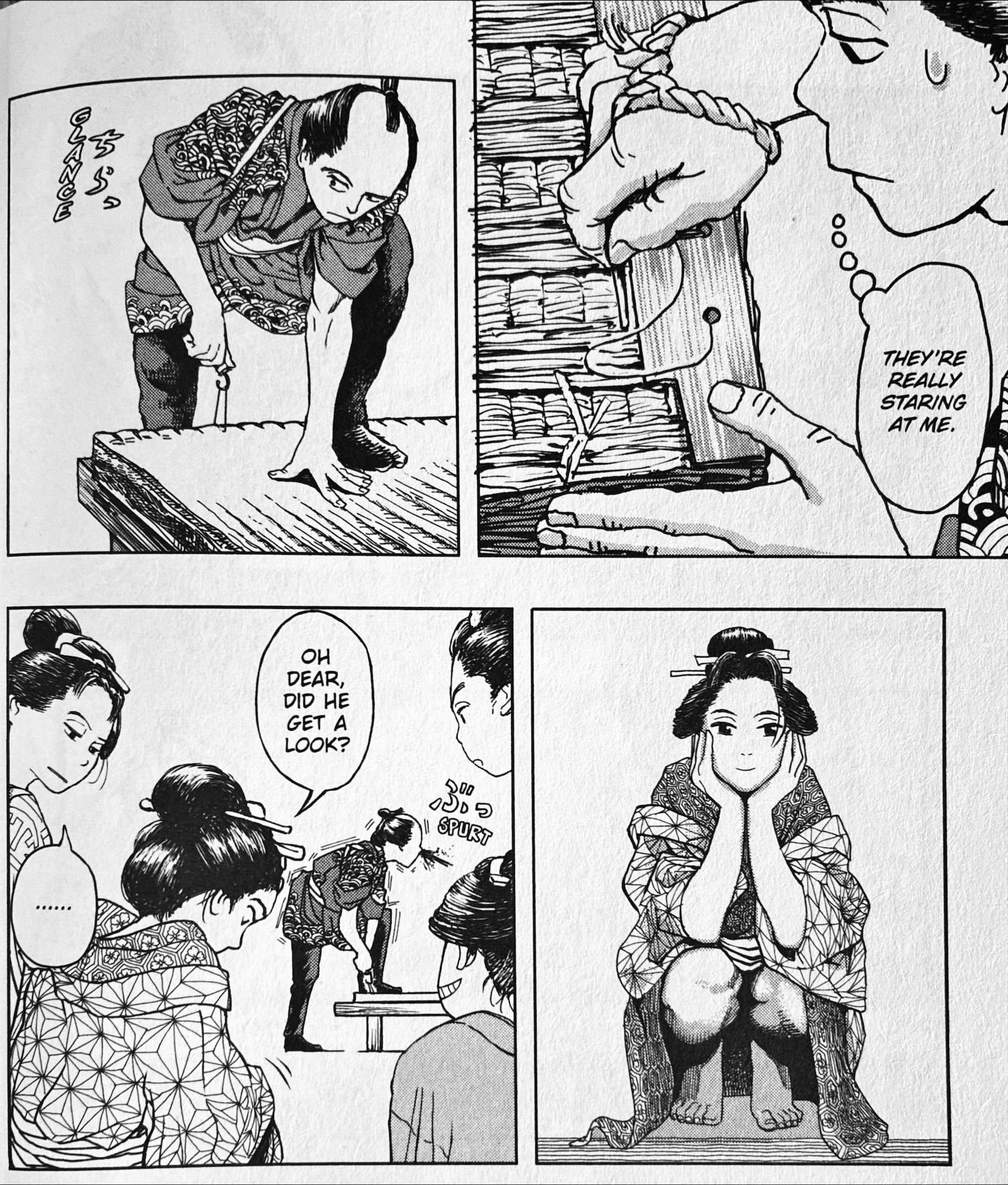
From this angle, Neighborhood Craftsmen is more a dedicated, romantic letter full of love to craft than a critical look into its existence within the sociological and economic landscape of the Edo period. Even though in chapter two, “The Swordsmith“, there’s a gesture towards the consequences of such craft, the narrative overall is less interested, at least for now, in a wider array of questions. Who can afford such high-quality artistry? What is the relationship like between the rulers of the time and the artisans? How does patronage shape the artistic sensibility, if it does? I wouldn’t consider this lack of perspective a loss, though it would complement the apparent affection the creator has for traditional crafts.
That being said, manga as a medium is known for its strength in captivating its readers, even when they focus on niche topics such as wine making, action cameras, rakugo (verbal storytelling), cosplay, or any hobby/art/craft you can think of, really. There’s definitely a manga about it. And Neighborhood Craftsmen has the power to whisk you away into a world of dedicated artisans, especially if you’re looking for something grounded. I’m in no position to comment on how true to life the portrayal of these traditional crafts is, but it reads like a lot of research and love has gone into this volume.
Yen Press’ physical release honors this gorgeous manga with a lovely, navy hardcover with a paper dust jacket, stealing even the heart of an anti-hardcover manga person like me. I find them hard to hold and harder to read. However, Neighborhood Craftsmen is very soft, easily opens, and being a little over 200 pages, it’s considerably light in your hands. This series benefits from its large trim size, as you can comfortably gaze at the beautiful panels with intricate details to your heart’s content. I’m curious whether the series will continue its episodic nature or take a different route, and I heartily recommend you check it out!

Neighborhood Craftsmen: Stories from Kanda’s Gokura-chou Volume 1 by Akihito Sakaue is available digitally and in print on Yen Press’ website and other retailers.


